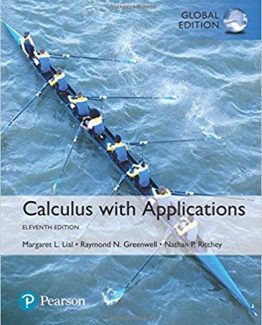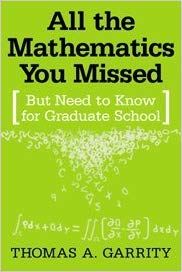Design and Analysis of Experiments with R First Edition by John Lawson, ISBN-13: 978-1439868133
[PDF eBook eTextbook] – Available Instantly
- Publisher: Chapman and Hall/CRC; 1st edition (December 17, 2014)
- Language: English
- 628 pages
- ISBN-10: 1439868131
- ISBN-13: 978-1439868133
Design and Analysis of Experiments with R presents a unified treatment of experimental designs and design concepts commonly used in practice. It connects the objectives of research to the type of experimental design required, describes the process of creating the design and collecting the data, shows how to perform the proper analysis of the data, and illustrates the interpretation of results.
Drawing on his many years of working in the pharmaceutical, agricultural, industrial chemicals, and machinery industries, the author teaches students how to:
- Make an appropriate design choice based on the objectives of a research project
- Create a design and perform an experiment
- Interpret the results of computer data analysis
The book emphasizes the connection among the experimental units, the way treatments are randomized to experimental units, and the proper error term for data analysis. R code is used to create and analyze all the example experiments. The code examples from the text are available for download on the author’s website, enabling students to duplicate all the designs and data analysis.
Intended for a one-semester or two-quarter course on experimental design, this text covers classical ideas in experimental design as well as the latest research topics. It gives students practical guidance on using R to analyze experimental data.
Table of Contents:
Cover Page
Half Title page
Title Page
Copyright Page
Table of Contents
Preface
List of Examples
1 Introduction
1.1 Statistics and Data Collection
1.2 Beginnings of Statistically Planned Experiments
1.3 Definitions and Preliminaries
1.4 Purposes of Experimental Design
1.5 Types of Experimental Designs
1.6 Planning Experiments
1.7 Performing the Experiments
1.8 Use of R Software
1.9 Review of Important Concepts
1.9.1 Design Name Acronym Index
1.10 Exercises
2 Completely Randomized Designs with One Factor
2.1 Introduction
2.2 Replication and Randomization
2.3 A Historical Example
2.4 Linear Model for CRD
2.4.1 Matrix Representation
2.4.2 L.S. Calculations with R Function lm
2.4.3 Estimation of σ2 and Distribution of Quadratic Forms
2.4.4 Estimable Functions
2.4.5 Hypothesis Test of No Treatment Effects
2.4.6 A Word of Caution
2.5 Verifying Assumptions of the Linear Model
2.6 Analysis Strategies When Assumptions Are Violated
2.6.1 Box-Cox Power Transformations
2.6.2 Distribution-Based Transformations
2.6.3 Alternatives to Least Squares Analysis
2.7 Determining the Number of Replicates
2.8 Comparison of Treatments after the F-test
2.8.1 Preplanned Comparisons
2.8.2 Unplanned Comparisons
2.8.3 Comparison of All Means to a Control or the Best
2.9 Review of Important Concepts
2.10 Exercises
3 Factorial Designs
3.1 Introduction
3.2 Classical One at a Time versus Factorial Plans
3.3 Interpreting Interactions
3.4 Creating a Two-Factor Factorial Plan in R
3.5 Analysis of a Two-Factor Factorial in R
3.5.1 Matrix Representation of Model and Analysis
3.5.2 Determining the Number of Replicates
3.5.3 Analysis with an Unequal Number of Replicates per Cell
3.5.4 Testing for Interaction with One Replicate per Cell
3.6 Factorial Designs with Multiple Factors—CRFD
3.7 Two-Level Factorials
3.7.1 Main Effects and Regression Slopes
3.7.2 Interactions
3.7.3 Example of a 23 Factorial
3.7.4 Shortcut Formula for Determining the Number of Replicates
3.7.5 Analysis with One Replicate per Cell
3.8 Verifying Assumptions of the Model
3.9 Review of Important Concepts
3.10 Exercises
4 Randomized Block Designs
4.1 Introduction
4.2 Creating an RCB in R
4.3 Model for RCB
4.4 An Example of an RCB
4.5 Determining the Number of Blocks
4.6 Factorial Designs in Blocks
4.7 Generalized Complete Block Design
4.8 Two Block Factors LSD
4.8.1 Creating and Randomizing Latin-Square Designs
4.8.2 Analysis of a Latin-Square Design
4.8.3 Determining the Number of Replicates
4.9 Review of Important Concepts
4.10 Exercises
4.11 Appendix—Data from the Golf Experiment
5 Designs to Study Variances
5.1 Introduction
5.2 Random Factors and Random Sampling Experiments
5.3 One-Factor Sampling Designs
5.4 Estimating Variance Components
5.4.1 Method of Moments Estimators
5.4.2 Interval Estimates
5.4.3 Maximum Likelihood and REML Estimators
5.4.4 Determining the Sample Size For One-Factor Sampling Studies
5.5 Two-Factor Sampling Designs
5.5.1 Estimating Variance Components
5.5.2 Confidence Intervals on Variance Components in Two-Factor Designs
5.5.3 Determining Sample Sizes for Two-Factor Sampling Experiments
5.5.4 Two-Factor Studies with Unequal Replication
5.6 Nested Sampling Experiments (NSE)
5.7 Staggered Nested Designs
5.8 Designs with Fixed and Random Factors
5.9 Graphical Methods to Check Model Assumptions
5.9.1 Simple Plots
5.9.2 Gamma and Half-Normal Plots to Check Constant Variance Assumption
5.9.3 Probability Plots of Empirical Best Linear Unbiased Estimates of Random Effects
5.10 Review of Important Concepts
5.11 Exercises
6 Fractional Factorial Designs
6.1 Introduction
6.2 Half-Fractions of 2k Designs
6.3 Quarter and Higher Fractions of 2k Designs
6.4 Criteria for Choosing Generators for 2k−p Designs
6.5 Augmenting Fractional Factorials
6.5.1 Augmenting by Foldover or Mirror Image Designs
6.5.2 Augmenting by Optimal Design
6.6 Plackett-Burman (PB) and Model Robust Screening Designs
6.7 Mixed Level Factorials and Orthogonal Arrays (OAs)
6.8 Definitive Screening Designs
6.9 Review of Important Concepts
6.10 Exercises
7 Incomplete and Confounded Block Designs
7.1 Introduction
7.2 Balanced Incomplete Block (BIB) Designs
7.3 Analysis of Incomplete Block Designs
7.3.1 An Example
7.3.2 Determining the Number of Replicates
7.4 BTIB and PBIB Designs
7.5 Row Column Designs
7.6 Confounded 2k and 2k−p Designs
7.6.1 Confounding 2k Designs
7.6.2 Confounding in 2k−p Designs
7.6.3 Criteria for Choosing Block Defining Contrasts
7.7 Confounding 3-Level and p-Level Factorial Designs
7.8 Blocking Mixed Level Factorials and OAs
7.8.1 Blocking Mixed Level Factorials
7.8.2 Blocking Orthogonal Arrays, Orthogonal Main Effect Plans, and Nearly Orthogonal Main Effect Plans
7.9 Partially Confounded Blocked Factorial (PCBF)
7.10 Review of Important Concepts
7.11 Exercises
8 Split-Plot Designs
8.1 Introduction
8.2 Split-Plot Experiments with CRD in Whole Plots CRSP
8.2.1 Creating a Split-Plot Design with CRD in Whole Plots with R
8.2.2 Model for a Split-Plot Experiment with CRD in Whole Plots
8.2.3 Analysis of a Split-Plot Design
8.3 RCB in Whole Plots RBSP
8.3.1 Creating a Split-Plot Design with RCB in Whole Plots with R
8.3.2 Example of a Split-Plot Experiment with RCB in Whole Plots
8.4 Analysis Unreplicated 2k Split-Plot Designs
8.5 2 k−p Fractional Factorials in Split Plots (SPFFs)
8.5.1 Minimum Aberration Fractional Factorial Split Plot Designs
8.5.2 Analysis of a Fractional Factorial Split Plot
8.6 Sample Size and Power Issues for Split-Plot Designs
8.7 Review of Important Concepts
8.8 Exercises
9 Crossover and Repeated Measures Designs
9.1 Introduction
9.2 Crossover Designs (CODs)
9.3 Simple AB, BA Crossover Designs for Two Treatments
9.3.1 Sample Size Estimation
9.3.2 Carryover Effects
9.3.3 Modified Designs When Carryover Is Possible
9.4 Crossover Designs for Multiple Treatments
9.4.1 Williams’s Latin-Square Crossover Designs
9.4.2 Designs with p > t or t > p
9.5 Repeated Measures Designs
9.6 Univariate Analysis of Repeated Measures Designs
9.6.1 Test of Huynh-Feldt Condition
9.6.2 Adjusted P-Values
9.6.3 Conservative Analysis of Summary Statistics
9.7 Review of Important Concepts
9.8 Exercises
10 Response Surface Designs
10.1 Introduction
10.2 Fundamentals of Response Surface Methodology
10.2.1 Empirical Quadratic Model
10.2.2 Design Considerations
10.3 Standard Designs for Second Order Models
10.3.1 Central Composite Design (CCD)
10.3.2 Box-Behnken Design
10.3.3 Small Composite Design
10.3.4 Hybrid Design
10.4 Creating Standard Response Surface Designs in R
10.5 Non-Standard Response Surface Designs
10.6 Fitting the Response Surface Model with R
10.6.1 Fitting a Linear Model and Checking for Curvature
10.6.2 Fitting the General Quadratic Model
10.6.3 Fitting a Nonlinear Mechanistic Model
10.7 Determining Optimum Operating Conditions
10.7.1 Contour Plots
10.7.2 Canonical Analysis
10.7.3 Ridge Analysis
10.7.4 Nonlinear Optimization
10.7.5 Multi-Response Optimization
10.8 Blocked Response Surface (BRS) Designs
10.9 Response Surface Split-Plot (RSSP) Designs
10.10 Review of Important Concepts
10.11 Exercises
11 Mixture Experiments
11.1 Introduction
11.2 Models and Designs for Mixture Experiments
11.2.1 Experimental Designs to Fit Scheffé Models
11.2.2 Alternate Models for Mixture Experiments
11.3 Creating Mixture Designs in R
11.4 Analysis of Mixture Experiments
11.5 Constrained Mixture Experiments
11.5.1 Upper and Lower Constraints
11.5.2 Analysis of Constrained Mixture Experiments
11.6 Blocking Mixture Experiments
11.7 Mixture Experiments with Process Variables
11.7.1 Models for Mixture Experiments with Process Variables
11.7.2 Multiple Process Variables and Mixture Components
11.7.3 An Example of a Mixture Experiment with Process Variables (MPV)
11.8 Mixture Experiments in Split-Plot Arrangements
11.9 Review of Important Concepts
11.10 Exercises
11.11 Appendix Example of Fitting Independent Factors
12 Robust Parameter Design Experiments
12.1 Introduction
12.2 Noise Sources of Functional Variation
12.3 Product Array Parameter Design Experiments
12.4 Analysis of Product Array Experiments
12.4.1 Loss Model or Location-Dispersion Modeling
12.4.2 Response Modeling
12.5 Single-Array Parameter Design Experiments
12.6 Joint Modeling of Mean and Dispersion Effects
12.6.1 Joint Modeling
12.6.2 Designing a Noise Array
12.7 Review of Important Concepts
12.8 Exercises
13 Experimental Strategies for Increasing Knowledge
13.1 Introduction
13.2 Sequential Experimentation
13.3 One-Step Screening and Optimization
13.4 An Example of Sequential Experimentation
13.4.1 Fractional Factorial Design
13.4.2 Definitive Screening Design
13.4.3 Analysis and Interpretation of Results
13.5 Evolutionary Operation
13.6 Concluding Remarks
Appendix—Brief Introduction to R
Answers to Selected Exercises
Chapter 1
Chapter 2
Chapter 3
Chapter 4
Chapter 5
Chapter 6
Chapter 7
Chapter 8
Chapter 9
Chapter 10
Chapter 11
Chapter 12
Bibliography
Index
John Lawson is a professor in the Department of Statistics at Brigham Young University.
What makes us different?
• Instant Download
• Always Competitive Pricing
• 100% Privacy
• FREE Sample Available
• 24-7 LIVE Customer Support






Reviews
There are no reviews yet.